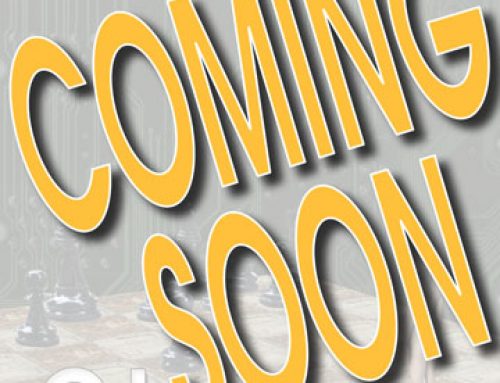The one thing that new writers probably do worse than anything else (other than maybe spelling and grammar) is writing dialog. They want to make it “real” and like how people actually talk. They figure that it’s the one part of writing that they need to worry the least about.
The thing is, written dialog isn’t like real speech. It’s a simulation of real speech. There are actually only a few tricks you need to know to improve your dialog skills: most are very easy, and one is devilishly slippery. I’m guessing that you’re going to want to know what they are.
The easiest one is that you must always endeavor to write in short bursts of speech — writing longer bits very seldom and only when there is no other choice.
If you pick up any moderately literate (or better) screenplay you will immediately see what I’m talking about. Almost every piece of dialog is three lines or less (most of it is two lines or less)… and in a script the dialog margins only allow for 35-40 characters a line. There are two reasons for this brevity. One, it tends to keep the exposition down so that you end up showing plot instead of explaining it — which is key to writing visually. The other reason is pacing. If you write more than a couple of dozen words, you risk having the reader’s mind wandering. Never give them an excuse to put down your work.
“But,” you ask, “what if my character has a lot to say?” I’m not saying that you have to edit them down (though it might be a good idea). Instead, you break up the speech with actions, descriptions, interruptions, questions, dialog from other characters. That’s the easy trick. Let’s try a quick example:
Jane stood in front of her unit. “I’ve got bad news. We’re the ones that have been selected to make the bridesmaid dresses. I realize that most of you wanted to work on something a little more stylish for your final project. Frankly, so did I. I don’t know how we’re going to make lime green and plaid work as a theme, but I sure you’re up for the challenge. You’re the best class I’ve taught in seven years, and if any group can design something with panache, I’m confident that you can. So, get to work and make me proud.”
OR:
Jane stood in front of her unit. “I’ve got bad news…”
“We’re making the bridesmaid dresses,” guessed Sven.
A groan erupted from the sextet of students. Jane continued, “I know. I know.”
At the end of the table, Alice meekly raised her hand, which Jane acknowledged, “Alice?”
“What are the colors?”
“Lime green and plaid,” Alice said, punctuated by more groans from the group. “Oh come on!” she whined. “You’re the best class I’ve had in seven years…”
“That’s about to end,” Raehvyn quipped.
“…and if anyone can bring this together, it’s you. Get to work and make me proud.”
You have two different styles for the same information. The first just sort of sits there. The second has more action. Not only is there movement with the words being split up, but actions (groans, hand raise) are inserted as more of an adjunct to dialog than as an actual action. Your reader doesn’t have to slog through blocks of “all that black stuff” (i.e., ink) in order to get through the story.
This also brings up the very important notion of action as dialog. This is often used for love themes, but can be adapted for other uses as needs arise. One of the most obvious ways of doing this is having your pair turn their bodies away from each other (on a park bench, in bed, restaurant booth), and having this be in conflict with the words they are saying. Or you can do it the opposite way. They are talking about various problems, but neither one can keep their hands off each other—often this manifests in hand holding and similar publicly acceptable demonstrations of affection.
This sort of communication-conflict is very important. If you pay attention, you find that people rarely say what they mean. Their real life speech isn’t “on the nose”. Neither should your character’s speech. They’ll think, do, and say conflicting things. Half-truths and half-lies are common in everyday speech. However, you do need to be mindful not to attract too much attention to what you are doing. Be subtle.
Don’t be afraid of salty language if it suits a character, but otherwise I’d recommend you avoid it. It’s generally just noise unless you use it sparingly enough that it actually has impact.
But what about “everyday language”? Don’t people stammer, and “um” and “ah” and other stuff? Sure they do. They also have distinct accents. All of it serves as a distraction to the reader unless you use them judiciously. Stutters and stammers are a case in point. You can certainly set up this s-s-p-p-p-eech p-p-p-p… p-p-pa-p-pa-t-t-t-t-ern when you introduce a character, but afterward it is generally safer to have the written words be plain (most of the time) and just say “he stammered”. It’s the same with accents. It’s very tempting to write in the patois you hear inside your head, but it makes reading tedious. Set it up, maybe use it occasionally, but mostly, just assume your reader is going to keep up.
With those simple basics behind us, we get to tackle the sticky bit of writing GOOD dialog. Every story is different, and every character is different. As a result, there is no magic bullet for this. It’s mostly practice, with maybe a smidgen of talent. As a rule of thumb, I’d say make your dialog as tight and concise as possible without damaging the flavor of what needs to be said.
Let’s flash back to a damp November day in Pennsylvania, 1863. Before a throng of people the main speaker, the noted orator Edward Everett, got up and spoke for something like two hours. Following him, another man rose and spoke just ten sentences before returning to his seat. Later, Everett wrote to that secondary speaker and said, “I should be glad if I could flatter myself that I came as near to the central idea of the occasion in two hours as you did in two minutes.” That second speaker was, of course, Abraham Lincoln. The piece being commented on… the Gettysburg Address.
Why mention this? It shows the difference between good writing and great writing. Don’t try to show off how brilliant you are (“The world will little note, nor long remember, what we say here…”), just service your work with the dignity and respect it rightfully deserves. Your characters will thank you for it, and it increases the odds that your readers will return.
Writing dialog gets easier with practice. You’ll soon discover how long-winded the characters in your early works used to be. At the same time, you’ll be amazed at how much more “real” your characters sound now. All it takes are some simple techniques and rules of thumb, combined with a little R-E-S-P-E-C-T.
“Quoth I”, she said.
One of the tricks to achieve what is generally thought of as good writing is for the author to remain as transparent in the final work as possible. This isn’t to say that the writer can’t inject their own stylistic flourishes in their work, but that they need to pick their spots. Don’t blow it on patches of story that are of little or no consequence. One of the most cited places of unnecessary abuse is in the quote attribution.
Convention informs us that the unornamented “said” and “ask/ed/s” are essentially transparent to the reader, and can/should be used with little regard for the number of times you use it. For the most part, this is true.
Quote attribution is used simply to help the reader know who is speaking. This is especially important when writing a long passage of dialog. To improve the flow, often a writer will simply do a couple of attributions at the beginning of the conversation, and then place the burden on the reader to keep track of who is saying what. This works well if there aren’t too many exchanges, or that information is overwhelmingly flowing from one character to another in a way that it’s easy to tell the two apart. When the dialog is more involved, attribution is necessary (and essential if three or more characters are talking).
“But ‘said’ and ‘ask’ are so boring,” a lot of writers whine.
Yes they are. That’s the point. They are so boring that the reader generally skips over them. “But you just used ‘whine’!” I can hear you say.
Yes I did. If you are going to use other words instead, make sure that you have a good reason. “Whine” gave not only attribution, but also tone and inflection — with only a single word substitution. You, the reader, didn’t have to work to process it. What if, instead, I’d written something like: “…a lot of writers say in that same annoying tone of voice children use when they don’t get what they want.”
While I don’t dismiss that this might be exactly how you’d like to write the attribution, it’s long and risks taking the reader out of the dialog. It might be better, for example, to use the “whine” attribution, and then include some follow-up action, such as a foot stomp, or a pout, or something else that isn’t being used to label the dialog.
I will also offer that if one of your character’s names begins with an “S” sound, and your story might be read out loud, you may want to be a little sparing on the “said”s and use something else (or maybe change the character’s name so that it begins with a different sound). When reading quietly, this is of no matter, but when trying to actually say the words, a string of “Sally said”s and “Suzie said”s and the like can easily become tongue-twisting. Better to avoid the problem, if possible.
All that said, the fact of the matter is that we, as writers, like to have a little more creative flare than just “said” and “ask” provide. Fine. Go ahead. Use what you feel you must. I will say that while a “she intoned,” might get past a persnickety editor, “he pouted” will not, nor will “he said expectantly”. “Intoned” relates to the aural while “pouted” is visually descriptive; “expectantly” describes emotion and not speech. Don’t mix things up when you can avoid it.
When all is said and done, you’ll find that not only will the simple way work best, but you’ll be writing faster because you won’t be wasting time trying to make your characters’ words “Flow into your readers ears like wine being poured into a jelly glass whose painted-on cartoon characters had worn away years before.”
Uh… and purple prose attributions… just don’t do them. Save them for the Bulwer-Lytton Fiction Contest.





